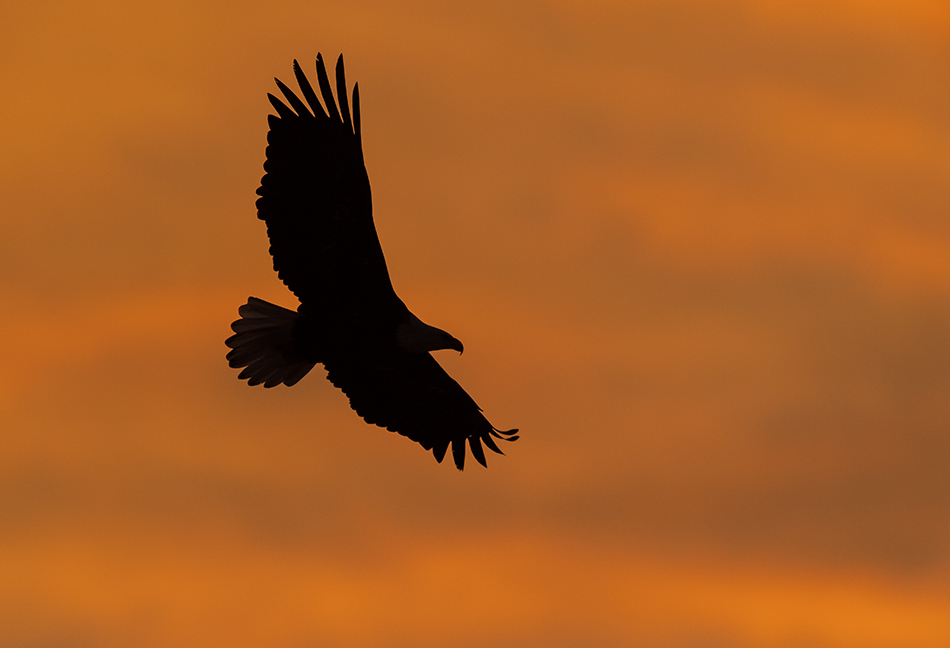We have a local pond that is being drained for development, which is unfortunate that another open space in our town is going to be developed. The short term silver lining is as the water goes down, hundreds of fish are being revealed. And with fish come eagles; yesterday we saw 30 bald eagles in the trees nearby. We have been photographing these eagles for weeks, we’re pretty lucky to live right near this area. In a few weeks, the fish will be gone, and the eagles will move to another area.

With that many eagles nearby, I have been watching sunrise conditions very closely. In the winter on the front range of Colorado we do get some good sunrises, probably more than any other time of year. And this morning looked like it would be good, so Cree and I loaded up at 6 AM and headed to the location. We had one goal in mind…silhouette wildlife photography. Our viewing was limited to the west side of the eagles, framing them against the eastern horizon. If the sunrise was good, we were going to get some good images.
Silhouette wildlife shots have some technique and tips that apply. First, metering is really easy. Set your meter to matrix/evaluative, and let your camera make the sunrise medium tonality, even though it might be brighter than this. Remember, a black silhouette is a black silhouette. You are only going to change the color of the sky. And generally middle tone sunrises are rich and saturated, just the way I want them to look. If I start to add exposure, the sky gets brighter and more washed out. And if you try to open up shadows on your subject, you may totally overexpose the sky and loose lots of color.
Another benefit is you will get to use a fast shutter speed. You are aiming right into a bright area, so even if it is near darkness elsewhere in the scene, you should get shutter speeds of 1/1000 or faster. The image at the top of the post was 1/1600, F8 at ISO 2500. If I used a wider aperture I could have brought my ISO down one full stop.

Other than the sky color, the most important part of the scene is the actual shape of the silhouette. Remember, you are getting a flat two dimensional subject. The viewer won’t see shadow detail and depth. Take a look at the shot above. Great sky color….and the bird is headless!

Now take a look at this image. The bird changed position and now it looks like an eagle.
With bird photography, especially birds in flight, wing position is really important! Did you know there are seven wing positions birds regularly display? And there are some positions that make good photographs, and others that don’t. If you want to learn more, consider joining our online bird photography class coming up in a few weeks…five full days of all things bird photography.

You might get this wing position, know as upstroke. Better silhouette with the primaries feathers very obvious. I always feel the best birds in flight celebrate just that…flight. An image showing primary feathers and graceful wing position is terrific.

But not all upstroke wing position is good. Take a look at this image…close, but going to the trash can. Just keep waiting, and you will get that classic wing position.
The next time you see a good sunrise or sunset developing, consider some silhouette wildlife photography. If the conditions are right, the images could be stunning. Good luck!